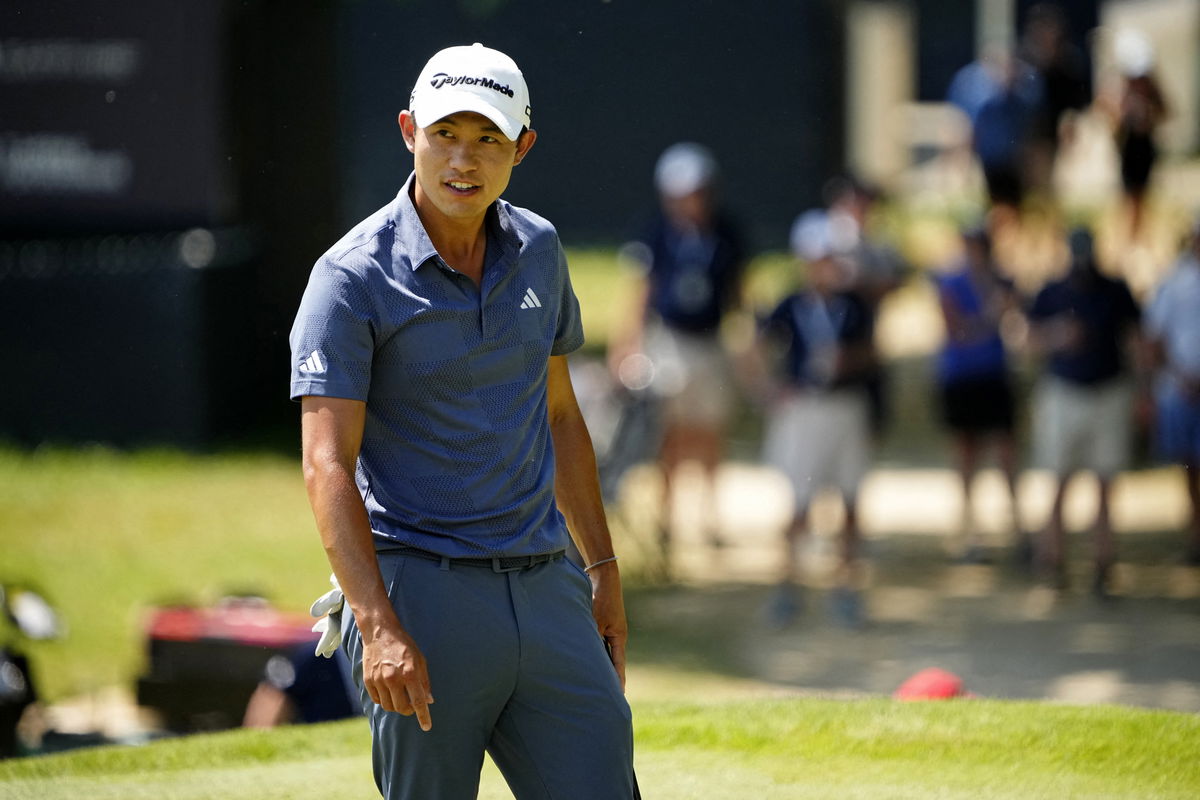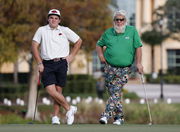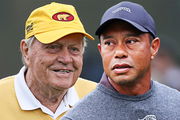
USA Today via Reuters
May 19, 2024; Louisville, Kentucky, USA; Collin Morikawa reacts after missing a putt on the fourth green during the final round of the PGA Championship golf tournament at Valhalla Golf Club. Mandatory Credit: Adam Cairns-USA TODAY Sports

USA Today via Reuters
May 19, 2024; Louisville, Kentucky, USA; Collin Morikawa reacts after missing a putt on the fourth green during the final round of the PGA Championship golf tournament at Valhalla Golf Club. Mandatory Credit: Adam Cairns-USA TODAY Sports
It’s been 661 days since Collin Morikawa last held a PGA Tour trophy, and the stretch has been anything but smooth. This year has shaped up to be one of the toughest of his career, marked by missed cuts, lackluster finishes, and a revolving door of caddies — five already, and we’re only halfway through the season. Even marquee starts have brought disappointment, with missed cuts at the Zurich Classic, Genesis Scottish Open, and The Open Championship, along with a T50 at the PGA and a T23 at the U.S. Open. Those low points have only sharpened his focus as he heads into the second playoff event, the BMW Championship, preparing in his own way; and it’s not just another caddie change.
Watch What’s Trending Now!
That search for a spark has pushed him to hone in on the most minor details ahead of Caves Valley, “Like, where’s my left off the tee? Yeah, so you can say down 20 from where we’re tagging it,” Morikawa discussed during his prep. “So where’s the 280 line going to? It’s gonna be just left of where he’s sitting. That’s 280 adjusted, is right there.” For him, the focus is on understanding the lines, yardages, and landing areas, taking in the greens, and pinpointing the safest spots. “Just to get accustomed to the shots you’re gonna be hitting, the rough, how it’s gonna be. See where the best spots are, really take in the greens as much as you can.” At Caves Valley Golf Club, a 7,500-yard layout with penal rough and subtly contoured greens, precision will be as important as distance. The course, which last hosted the BMW in 2021, can reward aggressive play — but with summer heat firming up the fairways and forecasted winds, picking the right spots will be critical.
With Urbanek on the bag, Morikawa seems intent on keeping things steady, at least for now. That attention to detail extends to approach play and specific pin positions. “We’re in the rough, and you have a back pin. I guess it depends on how good the lie is. If it’s a back pin on the right, you can’t really miss that far left. But if you miss right, you’re handcuffed,” he explained. “You hit it through it, and it lands 270. It’ll probably end up right here, driver. You gotta cut one, you pull it a little bit. This is a big golf course, and with all the changes, you gotta be on. There’s no faking around this golf course.” Morikawa enters the BMW ranked 17th in the FedEx Cup standings, needing a strong showing to secure his spot in the Tour Championship.
ADVERTISEMENT
“Walking a golf course is sometimes nice to really take in as much as you can.”
Join Collin Morikawa for his unique approach to prep for the BMW Championship.
(Presented by @StanleyBrand) pic.twitter.com/eEZsV7uRr5
— PGA TOUR (@PGATOUR) August 13, 2025
That sense of urgency is heightened by the path he’s taken to get here. Morikawa opened 2025 with a strong T2 at the Sentry, but his form quickly dipped, leading to a surprise split in April with long-time caddie JJ Jakovac, his partner in five PGA Tour wins. Brief stints with Joe Greiner and two others followed before he settled on Mark Urbanek for the playoffs. However, with little time to build chemistry, the partnership showed its limits, as seen in a T22 finish at St. Jude — a reminder, as Bryson DeChambeau’s former caddie Gregory Bodine noted, that lasting success requires time, communication, and trust.
It’s why Morikawa has been deliberate in his preparation this week, relying on a methodical course walk to offset the instability in his bag. That slow walk isn’t just sightseeing. It’s a chance to study every contour, wind shift, and nuance before the pressure kicks in. It’s a routine he carries into every tournament, using those walks to build a mental map of the course. Whether this strategy, after the caddie change disasters, bridges Morikawa’s winless drought remains to be seen at the BMW Championship.
ADVERTISEMENT
Top Stories
Meet John Daly II: Girlfriend, PGA Tour Career, Parents, Net Worth & More

Tiger Woods’ Poor Hiring Decision Cost Him the Chance to Surpass Jack Nicklaus, Says Former Caddie

Tiger Woods’ GF Receives Emotional Message from Daughter Kai Trump After Turning 48

Cheating Allegations Erupt as Scottie Scheffler Narrowly Beats Rory McIlroy at Golf Channel Games

Scottie Scheffler Makes Critical Health Announcement After He Ended PGA Tour Hiatus

Other players’ caddie changes compared to Morikawa’s rapid changes
A good caddie can be the difference between winning and losing, so pros must be mindful. However, Morikawa’s five rapid changes stand in dark contrast to other pros like Tommy Fleetwood and Scottie Scheffler. They have built years-long relationships with their caddies, bringing stability and trust to the greens. That, built over countless rounds, has helped them read each other’s game and stay in sync.
ADVERTISEMENT
Tommy Fleetwood has one of the strongest examples of a lasting caddie relationship. In 2016, after missing five cuts in seven weeks, Fleetwood knew it was time for a change. Fleetwood took the time to absorb the information before making a decision as important as hiring a caddie. However, that decision paid off as he paired with Ian Finnis. They won seven DP World Tour titles together and often came close to Fleetwood’s first PGA Tour win.
World No. 1 Scottie Scheffler also has a stable relationship with his caddie, with whom he paired first in 2021. Ted Scott and Scheffler’s fruitful duo won 17 PGA Tour titles and 2 Masters titles together. The masterful duo is one of the primary reasons Scheffler has maintained the No. 1 status for over 150 weeks now. As the dynamic continues to develop, Scheffler, however, might face a problem, forced to use a fill-in caddie at the BMW Championship.
These cases show how lasting player–caddie bonds can be key to success. Whether stability with Mark Urbanek can give Collin Morikawa that edge remains to be seen.
ADVERTISEMENT
ADVERTISEMENT
ADVERTISEMENT
ADVERTISEMENT

